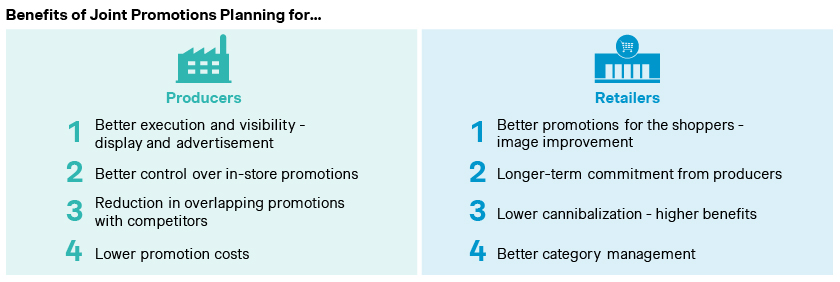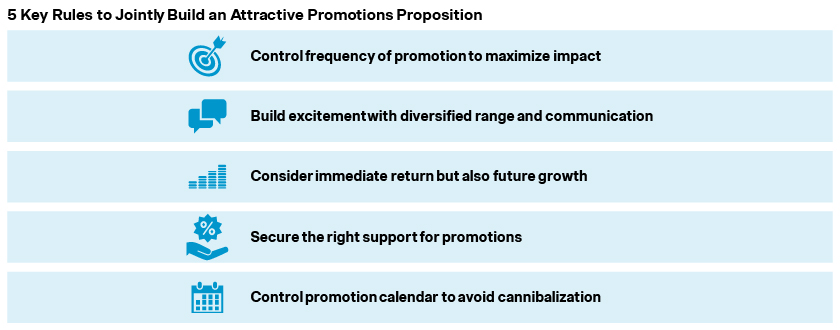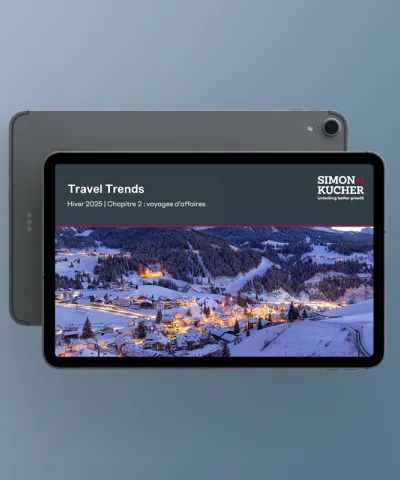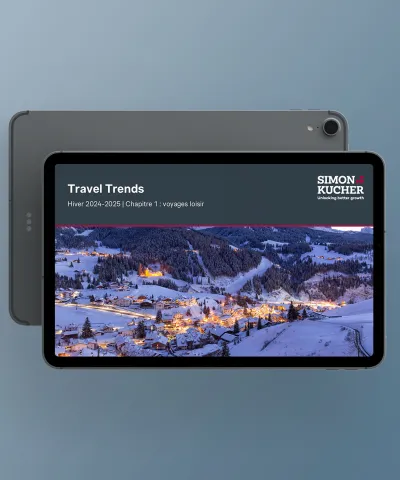Designing truly attractive promotions around shopper needs is always a win-win for producers and retailers. Promoting the right items with the right mechanics at the right time allows for great offers with minimum cannibalization damage. There is always the negotiation on who finances the discount, but one rule always holds true: if you plan the promotion calendar well, everybody benefits – including the shoppers.
Developing joint promotions benefits both producers and retailers
Whenever we work on a promotions project with a producer or retailer, we always focus on the specific benefits and investments behind promotions. As mentioned earlier in this series, many of the benefits of improving promotional effectiveness for a producer are also beneficial for retailers. For instance, by reducing promo depth for less price-sensitive products or choosing a better placement of products with a higher promotion affinity, profitability and margins are likely to improve for both parties: Here is a more comprehensive list of shared benefits from joint promotions:

5 key rules to create a win-win situation
Rule 1: Control frequency of promotion to maximize impact
Producers and retailers should agree on a promotions plan with a specific timeline and activation support. As discussed in part 2 of this series, when defining the 7 drivers of effective promotions, too often promotions erode margins in the longer term, as consumers get used to price discounts and stop purchasing the product outside of promotion. It is a common practice for retailers to conduct in-store promotions to sell off excess stock. Without involvement and support from the producer (e.g. leaflet display, store activation), these promotions are likely to have a modest impact and cannibalize the effectiveness of future promotions.
Rule 2: Build excitement with diversified range and communication
One of the effects of promotions is that is difficult to measure their ability to build excitement. In our experience, having major promotion events with a wider range and visible communication creates a lasting impression on the shoppers. Larger promotion displays not only generate more in-store traffic, but also convey the message “this is a promotion event, take advantage of it because we don’t know when the next promotion will be”.
Rule 3: Consider immediate return but also future growth
As mentioned in previous articles, promotions may have different roles across the product portfolio. While most promotions should generate a profitable sales return, they may also be conducted for other reasons – for example to generate awareness of a specific product. When promoting multiple products, it is good practice to combine top-seller products with potential upsell products to generate trial and grow the category in the longer term. In other words, use the returns from promoting well-established products to finance the growth of new innovations.
Rule 4: Secure the right support for promotions
Running promotions without proper communication support and in-store visibility is one of the most common pitfalls of promotions management. Producers and retailers should not only work together on the item selection and promotion mechanics, but also on where and how to communicate. Case in point, while working together with a leading FMCG company that had trouble securing promotion space in a major retailer’s leaflets, we found out that promotions of the same product which appeared on leaflets were generating up to five times more sales than those only promoted in-store. The producer decided to share the insights from the analysis with the retailer, and negotiated a plan to increase the number of leaflet promotions in the future, at a lower fee.
Rule 5: Control promotion calendar to avoid cannibalization
Retailers should plan smartly to effectively distribute promotions for competing products within a category. Let’s imagine a category where two products from two different brands make up almost the entire market, which is the case for some soft drinks categories. If both competitors decide to run the same promotion at the same time, they will cannibalize the impact and lose the potential benefits. However, promoting different products in alternating weeks will certainly bring similar volume to the category.

How to start building a joint promotions proposition
Joint promotion planning is high-value effort for producers, retailers, and customers. If you are a producer and are looking to professionalize your promotions, start by requesting sales data from your retailers, and communicate the willingness to collaborate on an ongoing basis. As a retailer, engage with the leading suppliers in their categories – with joint planning, they can provide insight and investment that will make your offer more attractive to the customers.
Read more from our promotional effectiveness series in the Middle East:
Part 2: The 7 drivers of effective sales promotions in the UAE
Part 3: Promotion effectiveness in MENA: How to fix the 30 percent of value-destroying promotions
Part 4: Digital promotions in MENA: Advantages of promotion database management
Part 5: 5 rules for producers and retailers to jointly build customer-centric promotions
Part 6: Promotion effectiveness in MENA: How do promotions change shopper behavior in the long term?








